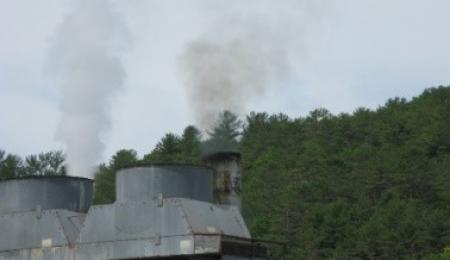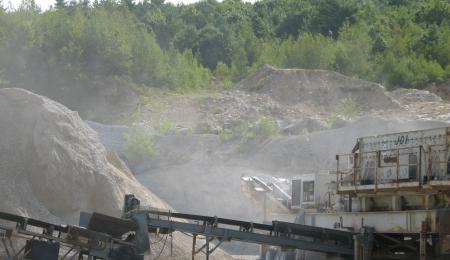Testing and Monitoring
Observing facility emissions testing and monitoring to show that limits are met.
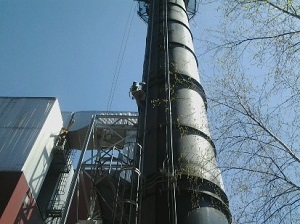 Under state statutory authority, NHDES has developed New Hampshire Administrative Rule Env-A 800, Testing and Monitoring Procedures for the purpose of establishing testing and monitoring procedures in order to determine compliance with applicable state and federal statutes and rules. Some stationary sources may be required to conduct a one-time or periodic compliance emissions test, also commonly known as a stack test, to measure the magnitude of one or more of its emissions. A stack test typically consists of three discrete measurement runs, each run lasting one or more hours depending on the test method and pollutant concentration(s) being measured.
Under state statutory authority, NHDES has developed New Hampshire Administrative Rule Env-A 800, Testing and Monitoring Procedures for the purpose of establishing testing and monitoring procedures in order to determine compliance with applicable state and federal statutes and rules. Some stationary sources may be required to conduct a one-time or periodic compliance emissions test, also commonly known as a stack test, to measure the magnitude of one or more of its emissions. A stack test typically consists of three discrete measurement runs, each run lasting one or more hours depending on the test method and pollutant concentration(s) being measured.
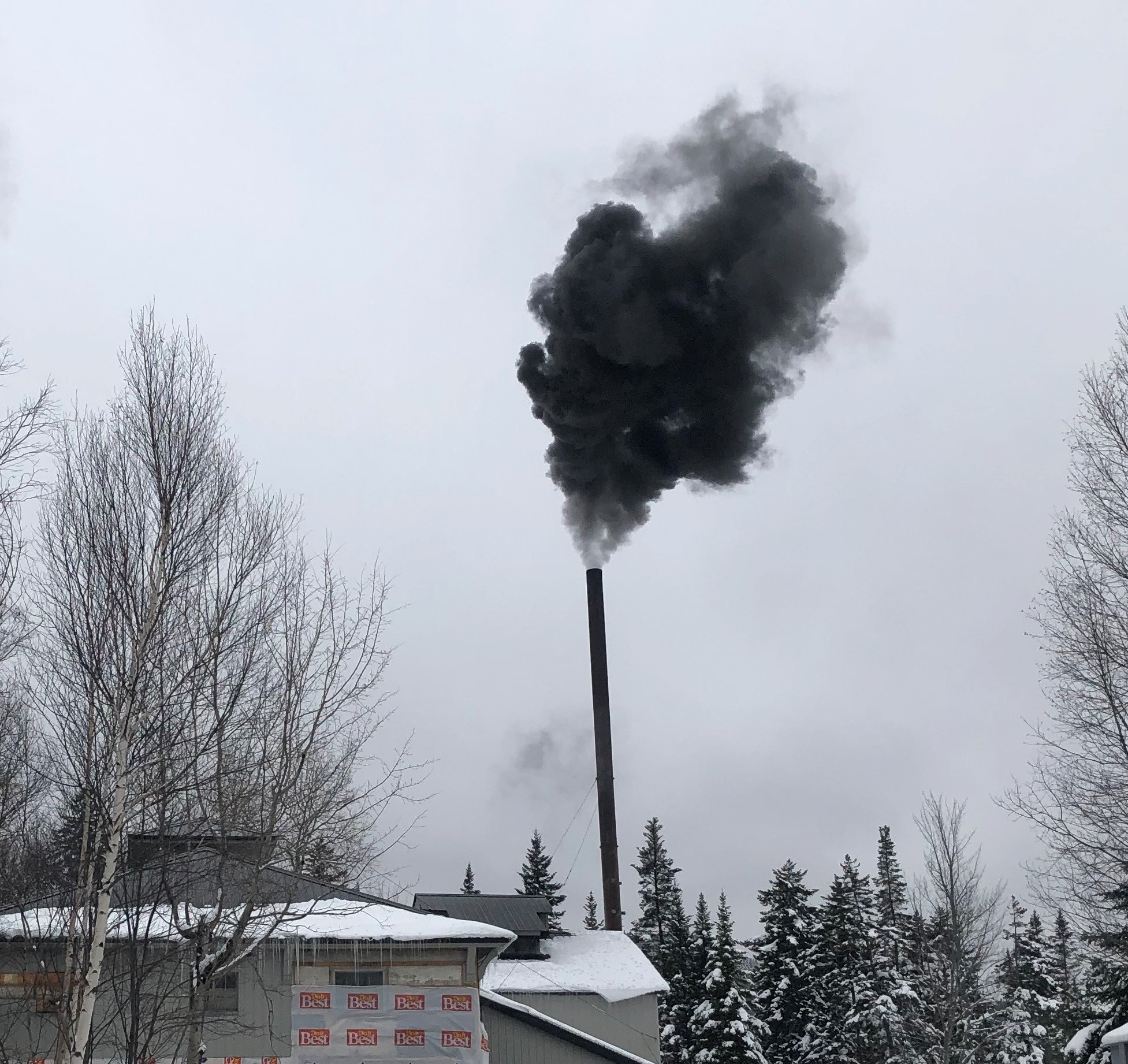
What is a stack test?
A stack test is conducted to measure the amount of air pollution that is emitted from an emissions point at a stationary source. These tests are not limited to stack locations. Testing is also done at the inlet to a control device, in duct work upstream of a smoke stack, locations along a rock crushing operation or surface of a landfill. Stationary sources may conduct tests for a variety of air pollutants such as particulate matter testing, multi-metals testing, hydrochloric acid testing, ammonia slip testing and visible emissions testing.
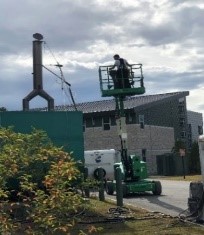
How do I find a testing company?
While NHDES cannot provide recommendations for testing companies, you may check the List of Stack Testing Companies for an up-to-date list of testing companies who perform work in New Hampshire. A testing company will help the industrial source prepare a pretest protocol, coordinate with NHDES the date of the pretest meeting and date of testing, conduct the required stack test and prepare a final stack test report. NHDES is involved in all aspects of testing including observing all tests; technically reviewing protocols and reports; and approving protocols and final test reports that demonstrate the facility’s emission results.
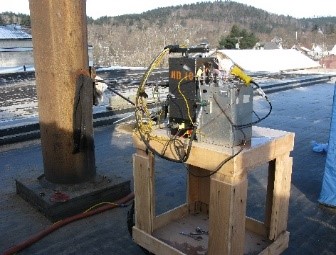
Test procedures, methods or guidance materials to be followed during a stack test
Depending on the facility and its emission unit(s), there are state and/or federal regulations that must be followed. The EPA has a published list of Promulgated Test Methods. Both NHDES and EPA have stack testing guidance documents, procedures and minimum requirements.
Rules and Regulations
Related Content
Did you know?
Did you know?
The NHDES Air Testing and Monitoring Program observes all compliance stack emissions tests conducted in New Hampshire. In 2019, the program observed 58 compliance stack emissions tests.
Sand and Gravel Processing Plants
NHDES issues permits to any stationary non-metallic mineral process plant or coal crusher with a design output of greater than or equal to 25 tons per hour or any portable plant with a design output of greater than or equal to 150 tons per hour. Sand and gravel processing plants may have to demonstrate by testing that the emissions from the process meet state and federal standards.
Fugitive dust can be an issue at sand and gravel processing plants. For more information on fugitive dust including rules, prevention, abatement and control, and how to file a complaint, see the Fugitive Dust webpage.
Spotlights
VIEW ALL SPOTLIGHTSHow are visible emissions measured?
Visible emissions are determined using EPA Method 9. EPA Method 9 requires that anyone making observations must be certified. Certification and annual re-certification (i.e. Smoke School) training is held in New Hampshire twice a year in approximately late April/early May and late September/October. Specific dates and times, locations and details of the next scheduled training sessions will be included on the NHDES Calendar of Events as more information is known.
How and when do I have to test my sand and gravel plant?
Depending on type and capacity, a facility may be required to perform testing to demonstrate that the visible emissions from its operation meet federal regulations and state standards.
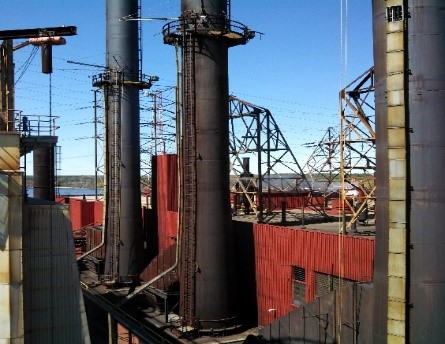 How to install a CEM/COM system
How to install a CEM/COM system
Prior to installing your CEM/COM system, NHDES requires that you submit a Monitoring Plan for review and comment. New Hampshire Administrative Rules Env-A 808, Continuous Emission Monitoring and applicable federal regulations found in 40 CFR Part 60 and/or 40 CFR Part 75 specify what information is required to be included in a Monitoring Plan and where to locate your CEM/COM system.
 What CEM/COM system reports are required?
What CEM/COM system reports are required?
If you operate a CEM/COM system, there are multiple reporting requirements. NHDES lists reporting requirements in state-issued air permits, which can be found on OneStop for specifics.
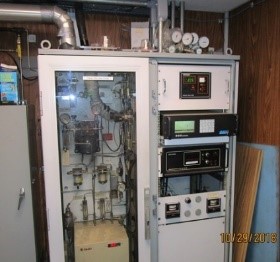
Minimum requirements for operating and certifying a CEM/COM system
At a minimum, the owner or operator of a CEM/COM system is required to conduct daily calibrations, quarterly audits and annual Relative Accuracy Test Audits (RATAs) of the CEM/COM system.
A list of stack testing companies that can help a source conduct the required audits can be found by going to the List of Stack Testing Companies.





